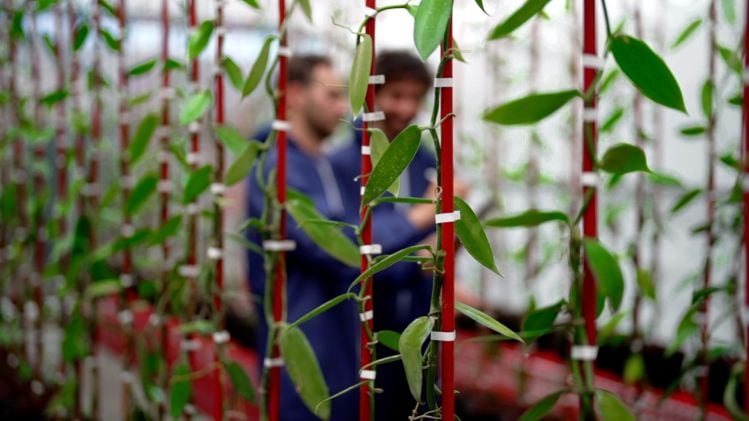While there are a variety of different options now available for companies keen to retain a ‘natural’ positioning and a clean label (see box below), vanillin synthesized from petrochemical derivatives (ie. ‘artificial’ vanilla flavor) still dominates the global vanilla flavor market, says Gali Fried, VP marketing and business development at Vanilla Vida.
“It’s not just about price. If you ask some of the biggest brands why don't they convert all their sandwich cookies to use natural vanilla and their answer is actually not price. It’s supply. Even if this year, they will put in the highest bid to buy all the vanilla in the world, when a bad cyclone in Madagascar can wipe out 80% of the crop, they can’t be sure that next year they will have enough vanilla [to flavor all their products].”
Unlike some other players that are creating natural vanillin from bioconversion or fermentation (see box below), Vanilla Vida is growing vanilla planifolia plants indoors in climate-controlled greenhouses.
“We’re growing vanilla plants, but we’re not replacing vanilla farmers in Madagascar or anywhere else,” stressed Fried, who said the company is looking to add to the world’s supply of beans, where demand will likely exceed supply for years to come, even if Vanilla Vida is a breakout success.
“If we bring enough vanilla to the world, more and more companies will have the confidence to move to use natural vanilla and we will increase the entire market.”
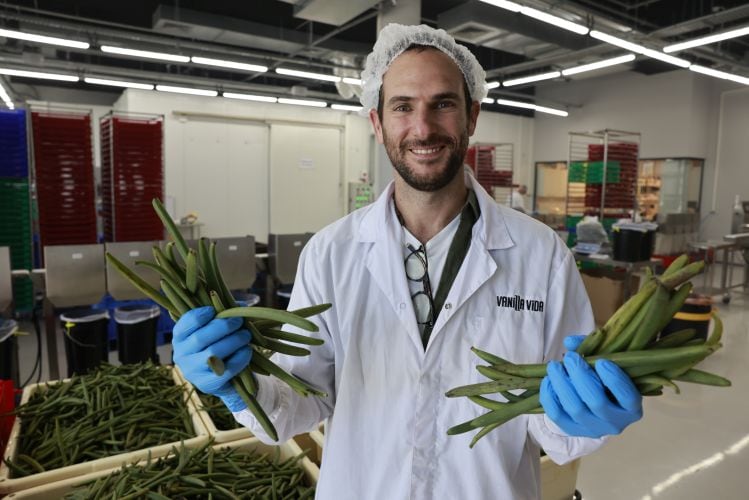
Vanilla Vida was founded in 2020 by Oren Zilberman (CEO); Raz Krizevski (CTO), and Shlomo Kadosh (COO), and now has a team of 23. Backed by investors including Strauss-Group (which owns The Kitchen FoodTech Hub – which is part of the Israeli Innovation Authority technological incubators program), PeakBridge, Kibbutz Maagan Michael, and Ordway Selections, it has raised around $15.5m to date.
Faster growth, reduced curing time, higher levels of vanillin
Vanilla Vida’s plants are not genetically engineered, and Fried stresses that “We are not a breeding company,” but thanks to the precisely controlled environment (temperature, humidity etc) saplings become mature and productive much more quickly (in two years rather than four), while the traditionally six-month-long curing process for the pods has been dramatically reduced to “about two to three months.”
Critically, using these growing and curing methods, yields of vanillin, the primary flavoring component in the crop, have increased from an industry average of just 1.2-1.8% to up to 5%, a gamechanger for the industry, she claimed.
“We took some [freshly harvested] vanilla beans from Uganda and put them through our curing process and just through that alone, we achieved 4% vanillin content. This year we did a new protocol and reached 5%, and we believe that next year when we have our own yields [from plants it grows in-house] we will have 7%.”
Asked about IP, she noted that growing vanilla plants indoors is not in and of itself particularly special, although growing them in a sophisticated climate controlled environment is new. The “growing part is really know-how,” she said. “But the curing part is what we have patented. We know how to control the metabolism of the bean, naturally.”
‘We are looking at the United States as the next place to grow vanilla’
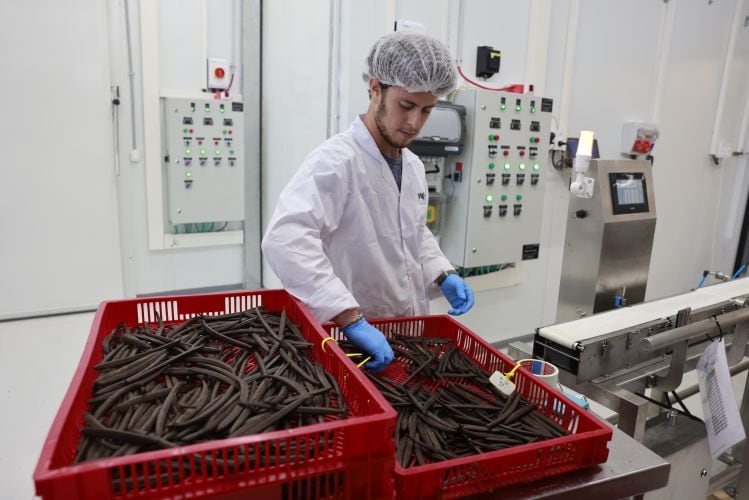
Established in 2020, Vanilla Vida – which has raised $15.5m - already has paying customers from six countries, including flavor & fragrance companies and restaurants, said Fried, who said Vanilla Vida is currently growing the plants in its own greenhouses in Israel, but is now “looking at the United States as the next place to grow vanilla so we can get closer to our clients, close the transportation gaps and be much more sustainable.”
She added: “We start with the tissue culture, then when the plants are a year old, they are transferred to our farmers who grow them using our protocols. They can then earn money from selling the vanilla beans back to us, but also selling electricity from solar panels to heat the greenhouses, as they don’t need that much heat.”
Once the vanilla pods are harvested, they go to the company’s curing facility where automated systems check key metrics such as humidity levels so that the pods are not constantly being handled as is the practice in traditional farming operations, said Fried. “So our beans are not oily. In traditional farming they might be handled 100 times in a six-month time period.
“Today we have 1.5 acres of greenhouses. In 2023 we will have 5 more acres in Israel, and are starting to look for new locations in the US and Western Europe.”
She added: “Today we have paying clients from six countries, buying in hundreds of thousands of dollars. In 2023 we expect a 10-fold increase in sales and expect to reach 10 significant paying customers.”
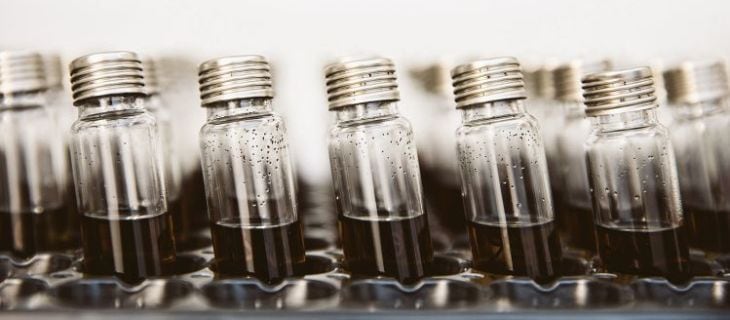
Navigating the vanilla market
Right now, vanillin derived from petrochemicals (artificial flavor) still dominates the market globally, although vanillin produced via bioconversion of a component (ferulic acid) in rice bran (eg. Rhovanil natural vanillin), or through genetically modified yeast strains (IFF/Evolva’s natural vanillin) can be labeled as ‘natural flavor’ in the US.
To save money but retain a natural positioning, companies may also use a small amount of vanillin from vanilla beans and combine it with natural flavors from other sources to create a ‘natural flavor’ for a vanilla ice cream, for example.
Ultra-premium ice cream brands meanwhile, might exclusively use ‘vanilla beans,’ ‘vanilla extract,’ or ‘ground vanilla beans,’ which come with a far heftier price tag and a more complex flavor and aroma profile than, say, vanillin alone, with floral, spicy, creamy, chocolate, or even tobacco-like notes.
Vanilla beans: Under 5% of vanilla used in the food industry is derived from the cured pods (vanilla beans) of vanilla orchids, which are primarily grown in Madagascar, but are also grown in Mexico, Tahiti, Indonesia and Uganda. Vanillin is the major compound influencing the vanilla flavor, contributing 1–2% of the cured pod; however, minor compounds from the cured pods contribute a complex array of flavors including chocolate, nutty, floral, spicy, woody, citrus, and creamy flavors.
Guaiacol: Most vanillin is synthesized from integrated catechol and is considered to be an artificial flavor (although it can also be listed on labels as vanillin).
Paper waste: Vanillin can be made from lignin, from wood, which some foodmakers prefer to vanillin made via guaiacol. However, it is not considered 'natural' by regulators.
Bioconversion from ferulic acid from rice bran or other crops using micro-organism: Solvay, which uses a naturally-occurring yeast and ferulic acid from rice bran to make its Rhovanil natural vanillin, says this product can be labeled as ‘natural flavor’ in the US and Europe.
Fermentation from sugars with a genetically engineered baker’s yeast: Biotech company Evolva has partnered with IFF to commercialize vanillin produced in this fashion. Evolva’s modified yeast strain makes a glycoside precursor of vanillin, which the company then converts to vanillin after removing the yeast.
Image credit: Vanilla Vida
Customized flavor profiles
Another exciting thing about Vanilla Vida’s technology is that it can tailor the flavor profile according to customer needs, added Fried, noting that the flavor all comes out during the curing process, and Vanilla Vida can modify conditions such that more chocolatey, or smoky, or caramel notes come out for example.
“We have lots of client engagement, from flavor and fragrance companies to ice cream manufacturers, restaurants, patisseries, food and beverage companies, and cosmetic companies.
As for the business model, she said: “The Vanilla Vida team will always do the tissue culture and the propagation. The next step depends on the customer.
“We can grow and cure our beans in Israel and in other markets, and then sell our vanilla beans directly to the industrial market (flavor companies, CPG etc), and work through distributors to reach the gourmet market, patisseries, hotels, restaurants and so on.
“But if a flavor and fragrance company wants to partner with us, we can custom build and operate a growing and curing facility next to their facility, so we’re looking at build, operate, transfer models as well, but that may be a bit further down the road, maybe in 2024 or 2025.”
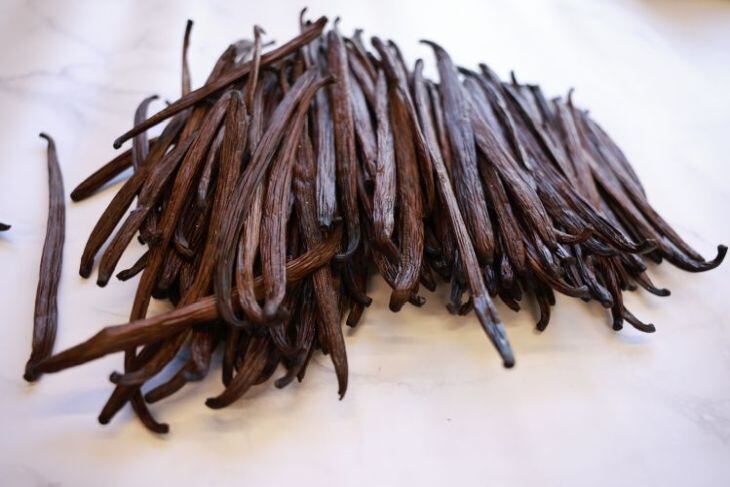
Mintec: Vanilla beans from Madagascar come with minimum price tag of $250/kg
According to an August 2022 report from Mintec, vanilla production in Madagascar is expected to decline in 2022/23 following weak flowering in growing areas in the northeast of the island in late 2021, although production is likely to remain above the 5-year average of c.1,900 tons, owing to strong plantings in the past several years.
Authorities in Madagascar say the $250/kg minimum export price on vanilla beans will be maintained for the 2022/23 export campaign, adds Mintec.
According to the USDA, the US imported 1,283 tons of vanilla in the six months through June ’22, an increase of 38% year-on-year and up 41% on the five-year average.
Image credit: Vanilla Vida

